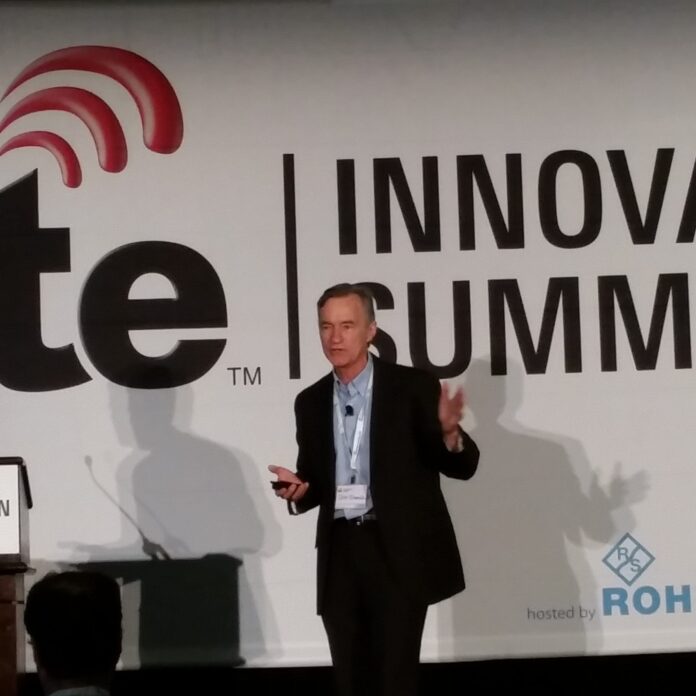DEL MAR, Calif. – 5G technologies took center stage at the LTE Innovation Summit’s second day, with enticing glimpses of the work that is already being done to advance the development of 5G systems as well as the stark reality of some of the engineering challenges that lie ahead.
Wilhelm Keusgen, deputy head of department at the Fraunhofer Heinrich Hertz Institute in Germany, walked participants through the channel sounding work that he has been involved with, to explore the behavior of spectrum above 3 GHz in indoor and outdoor environments so that its characteristics can be better understood an initial step toward the use of millimeter wave spectrum.
Keusgen also noted that a dozen 5G-related projects are slated to start as of July, with funding from 5G-PPP, a public-private partnership in Europe focused on the advancement of 5G technologies.
Charlie Zhang, senior director and head of Samsung’s wireless communications lab, shared work that Samsung has done in Korea and Dallas, Texas, to explore not only massive MIMO systems but also actual transmission at 5G-level speeds. Samsung has been actively supporting a push for the use of millimeter wave for some time, and its researchers have successfully tested mobility for 5G using a moving vehicle, and also achieved transmission rates of more than 7.5 Gbps.
Zhang, who is also active in 3GPP’s standardization work and led the RAN1 working group for a number of years, told conference participants that 3GPP has agreed to begin the first work items related to 5G this year. He noted that it takes around three to four years for technologies to move through the standards process – meaning that beginning work on establishing a 5G standard now will presumably mean an initial release around 2018-2019, a timeline that fits very well with the expectations that 5G will emerge around the year 2020. Already, there have been promises of having 5G available for major events such as the 2020 Olympics in Tokyo.
All of the speakers, however, acknowledged that major engineering challenges have to be addressed in designing cellular systems to operate in millimeter wave spectrum because of the very short propagation characteristics and quick dissipation of the signal – the wavelengths at such high frequencies are only a few centimeters, meaning that the signal has significant path loss once it leaves the base station; and that it is not well-suited for penetration. Keusgen said that even, say, the human body can cause shadowing that interferences with the delicate signals.
The channel sounding work that Keusgen has done examines frequencies between 40 GHz and 100 GHz. Samsung has done work at 28 GHz. Keusgen set up a 5G channel sounding demo at LIS2015 that utilized some of the highest frequencies in the likely frequency range for 5G, at 99 GHz.
The evolution of hardware to support 5G is one of the significant challenges. Power amplifers are one of the weak points of existing systems that will need considerable evolution to support 5G, Zhang noted.
Along those lines, Russell Hoppenstein, HSDC application manager at Texas Instruments shared insights on the evolution of RF sampling techniques so that chipsets can evolve to support more flexible systems that make use of more spectrum bands and aggregation techniques. And Jeff Shamblin, chief scientist for antenna manufacturer Ethertronics, shared prototyping work that the company has done to design a four-by-four MIMO system within a device slightly larger than a smartphone handset, measuring 100 mm by 160 mm (for comparison, the iPhone 6 Plus is 158.1 mm by 77.8 mm and the Samsung Galaxy S6 has dimensions of 143.4 mm by 70.5 mm). Shamblin noted that 4×4 MIMO is already in use in satellite television systems, but that its use in cellular systems has been slower due to the small size of handheld devices that must be able to have real estate for four antennas.

